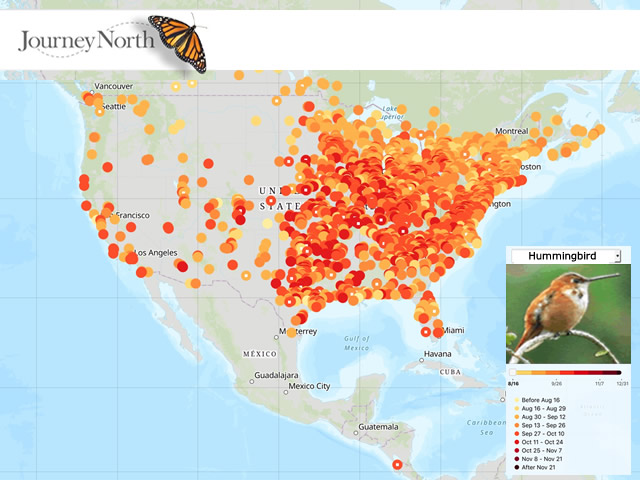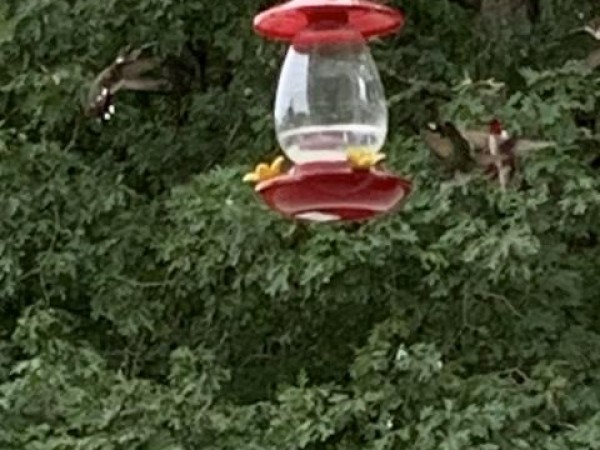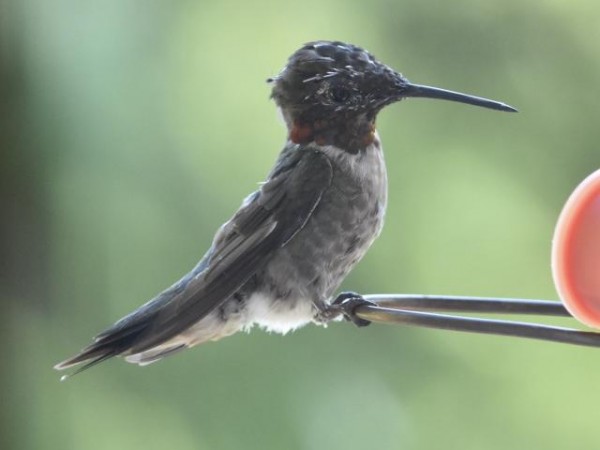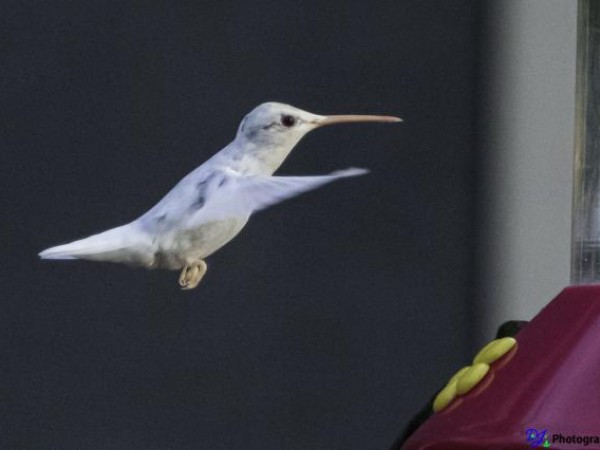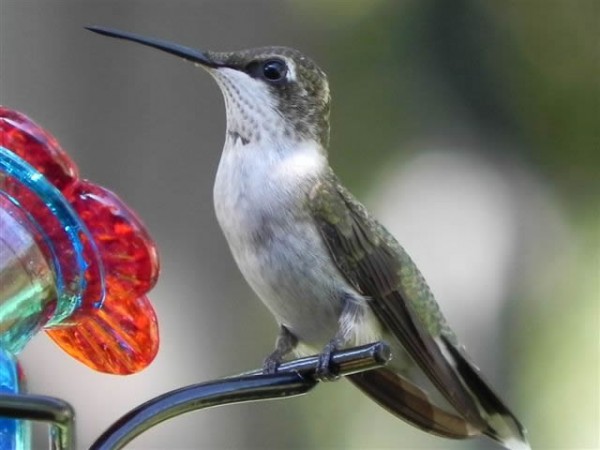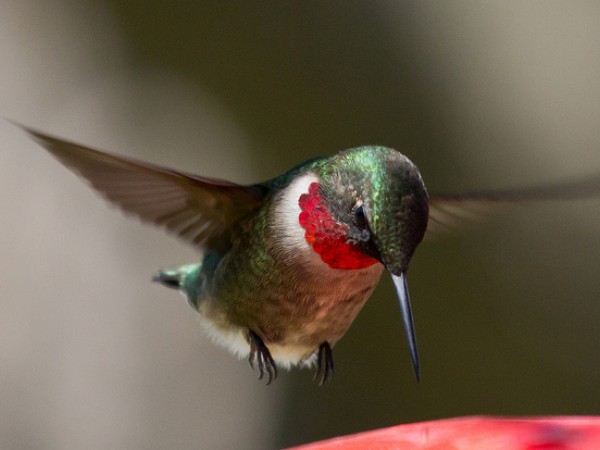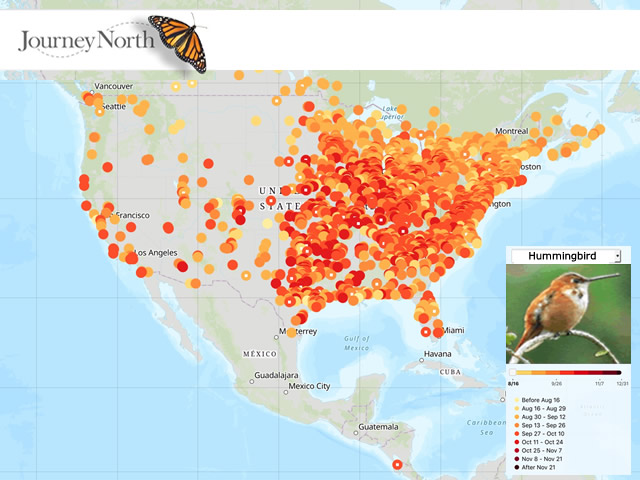Males on the Move. Females and Juveniles Remain.
Feeding frenzy as hummingbirds bulk up for their fall migration.
Disappearing in the North
Across the northern United States and parts of Canada, sightings of adult males are becoming more scarce. Adult females and juveniles remain for awhile after the adult males leave. But don’t judge the male hummingbird as a poor father for leaving early. After he’s gone, the mothers and juveniles can feed without competing with him for food. This is their time to prepare for migration. Newly-fledged birds need the time to mature and gain fat reserves before flying off on their first migration south.
From Clearwater County, AB: Bernie noted, “One Juvenile Ruby Throat female at feeder several times. Seems to be the only one around.” (08/21/2019)
From Mullan, ID: Brenda observed, “Female and juveniles fueling up getting ready to fly south.” (08/20/2019)
“Here Today, Gone Tomorrow” Along the Migration Trail
Careful observers can tell a visitor from a summer resident by watching its behavior. Where the visitor rests, how long it stays, or how tentatively it feeds at the feeder are reliable clues that the bird is passing through. In the southern region of the United States, Journey North observers are noting more male Ruby-throated hummingbirds showing up at their feeders, joining resident male hummers. There appears to be a “feeding frenzy” going on.
From Ashland City, TN: Perry observed, “About 2 days ago 5 or 6 males left our 3 feeders. Only 1 make remains.” (08/21/2019)
From Alpharetta, GA: Sarah reported, “On Aug 19, 2019 the migratory adult males arrived! These, added to the juvenile males and females who have been here all summer equates to about 15-18 hummers. They are feeding from flowers and feeders - went through 3 cups by this morning, and as of 7 pm none of my 10 feeders is more than half full.” (08/20/2019)
Western Hummingbird Species Observed
In the western region of the United States, some Journey North citizen scientists are recording a diversity of hummingbird species at their feeders as well as the peek of hummingbrid migration ending.
From Guadalupita, NM: Laura noted, “Lots of hummingbirds in the canyon @7800 ft. We had 1 female Calliope; 31 Rufous; 5 black chinned; 4 Broadtail.” (08/20/2019)
From Pine, CO: John sums up the situation: “Numbers dropping now since last week. Feeding frenzy is diminishing. We peeked at about 25 birds we still have more females and juveniles.” (08/20/2019)
A Unique Sighting: All White Hummingbird
White hummingbirds are rare. According to Dr. Bill Hilton, executive director of Operation Ruby Throat & Hilton Pond Center, there are two types of all white hummingbirds: true albino hummingbirds and Leucistic hummingbirds. True albino hummingbirds have white feathers, pink eyes, feet, and bills. Leucistic hummingbirds still have their “normal” black eyes, feet, and bills. However, the feathers of Leucistic hummingbirds are pure white, tan, or gray instead of their “normal” plumage colors. Journey North citizen scientist, David, observed what appears to be an albino Ruby-throated hummingbird.
Keep Reporting-Your Observations Are Critical
Fall Migration 2019
Report at least once per week as long as hummingbirds are present. Do not report when you no longer see them.



